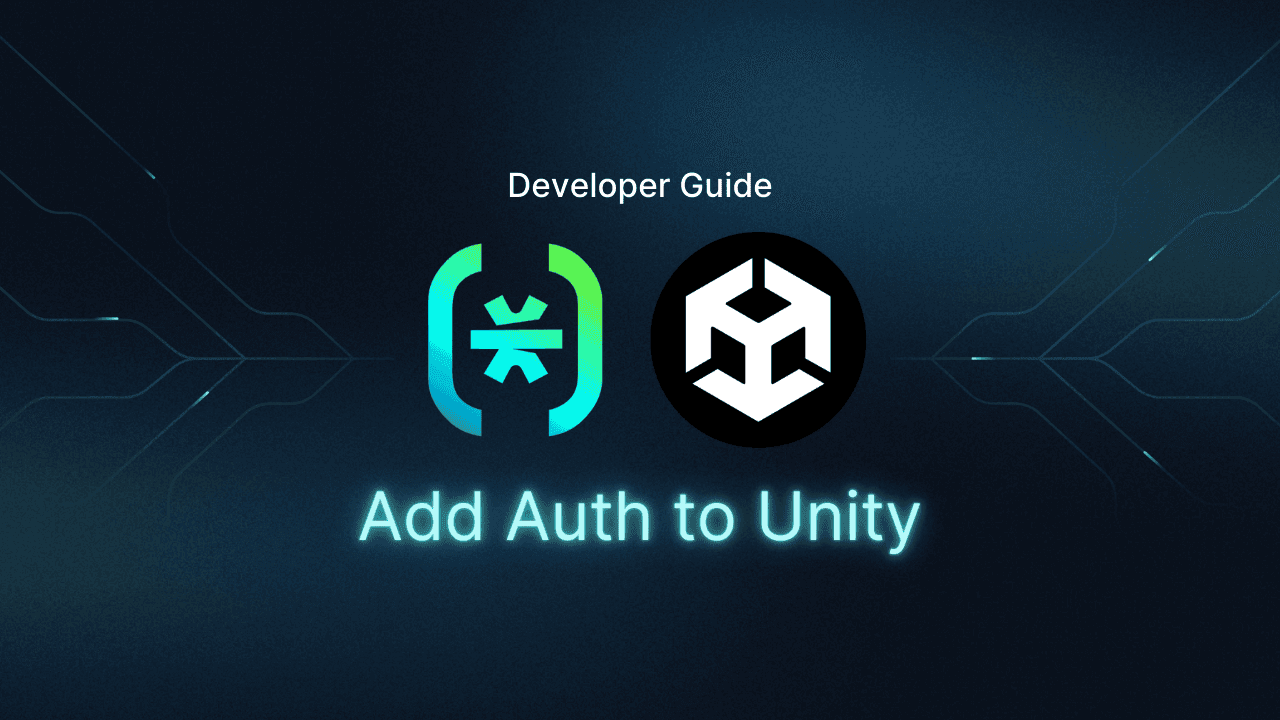Table of Contents
Make authentication easy, level up player retention
I once spent three days waiting to log in to a game.
On paper, it was right up my alley: tactical and turn-based, with hand-drawn art style and deep lore. But logging in required a phone number, and the SMS message with my verification code never came through. By the time support responded, the weekend (and my enthusiasm) were long gone.
Here’s what breaks my heart: The devs poured years into crafting this game. But their hastily assembled authentication became a barrier between all that hard work and me, a player wanting to love it.
This isn’t about a single game’s onboarding issues, though. We’re seeing a market-wide challenge that costs everyone, devs and players alike. Because when authentication fails, it’s an instant game over.
Now the good news: Modern authentication doesn’t have to be this painful. In this article, we’ll cover:
How developers can streamline authentication for better onboarding and retention
When adaptive security actually enhances the player experience
How thoughtful payment authentication protects everyone without killing conversions
Auth in video games is best when it’s virtually invisible, so let’s look at ways to help it fade into the background!
Make authentication easy, level up player retention
Your game’s first boss should not be the login screen.
Yet, for many unlucky titles, that’s exactly what happens. Free-to-play (F2P) mobile games get it the worst: being forced to fill in forms before the juicy gameplay is hardly what players want, and competition for their attention is as stiff as ever. The mobile app marketplaces are inundated with games that get straight to the action rather than asking for one-time passwords or linking with existing accounts.
For example, games that release on a single platform, like Steam, Epic, or mobile app stores, leverage those providers’ identity infrastructure. These logins are virtually invisible because game devs can simply invoke the players’ platform account, which is essentially single sign-on or social login. Of course, relying on this platform architecture can result in tech debt for later cross-platform releases—but we’ll come back to that later.
There are also titles that delay account creation to engage players as quickly as possible. Take the recent gacha game (and personal favorite) Persona 5: The Phantom X, which allows players to begin playing with a guest account instead of bombarding them with forms. The whole linking process that makes an account bound to the platform and device can be delayed for quite some time.
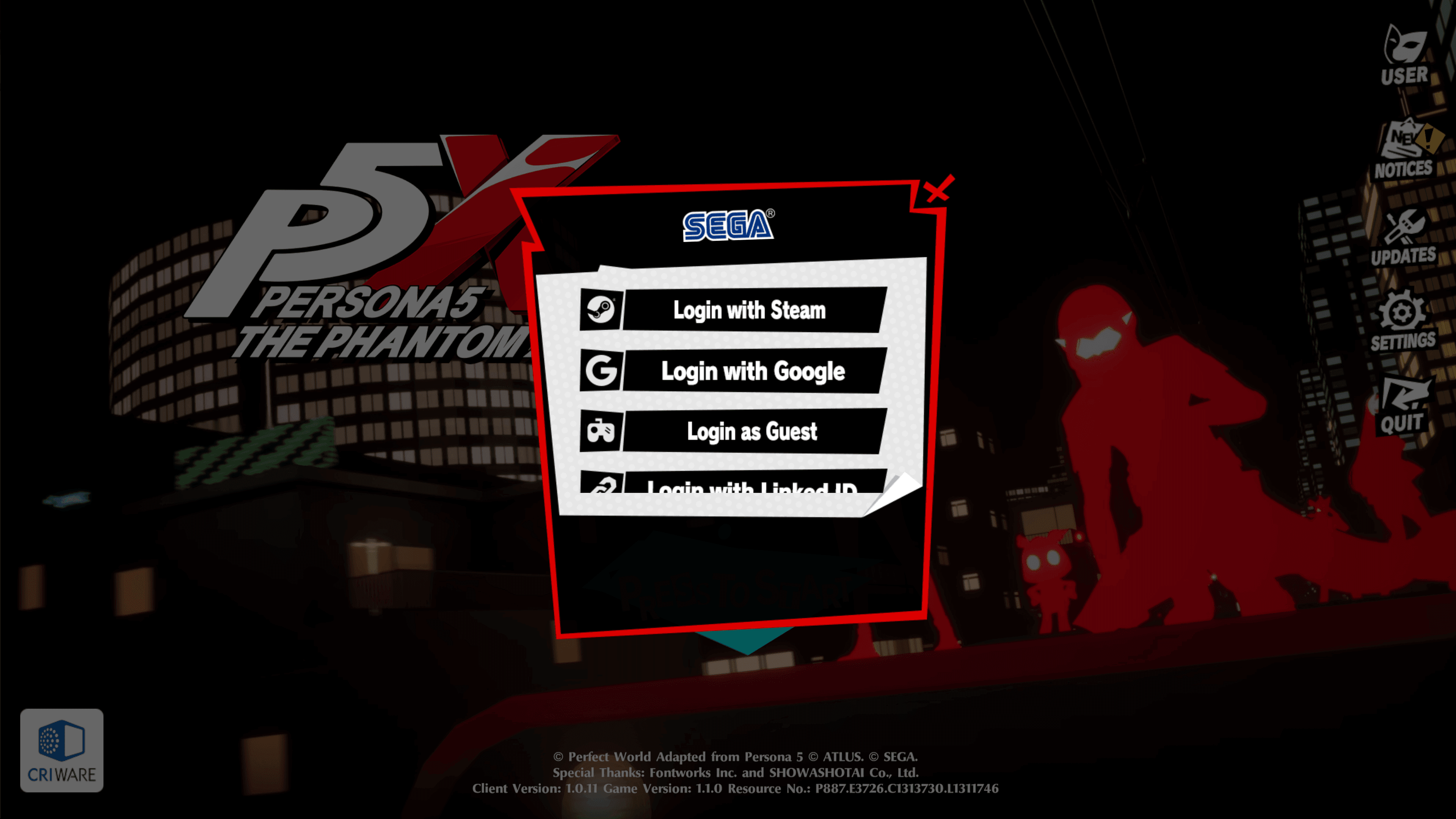
Both of these scenarios point to a simple solution: remove onboarding obstacles. Roadblocks like adding a phone number, linking an email, even creating a “full” account—these should be enforced only if required for security or compliance. Annoyances like creating a new password are the last thing on a player’s mind when they’re launching your game for the first time.
Want to give your game a chance with modern players? Don’t make simply getting to the tutorial an endurance test. Ditch the passwords with social login or other passwordless auth methods, and push all that pesky data collection as far into the future as you can with progressive profiling.
Build platform-independent auth from day one
Here’s a truth that most game devs learn too late: that mobile-exclusive launch you’re planning? If it takes off, you’ll want to expand. PC port, console release, maybe a listing on both Epic and Steam. But if you’ve built your entire identity system on the App Store and Google Play infrastructure, you’re now looking at a mountain of technical debt and may face the wrath of players who can’t access their progress cross-platform.
Whether you’re a megalithic studio or a budding solo dev, there are parts of your game that you don’t need to address until the final stretch—but authentication isn’t one of them. If this article had a loading screen tip, it would be this: Build platform-agnostic authentication from the start. Yes, even if you’re “just” launching on one platform. Modern identity providers can hook into virtually any popular gaming service through OpenID Connect (OIDC) in minutes. But if all you’ve ever used is built-in auth from mobile marketplaces, you’ve got your work cut out for going multi-platform.
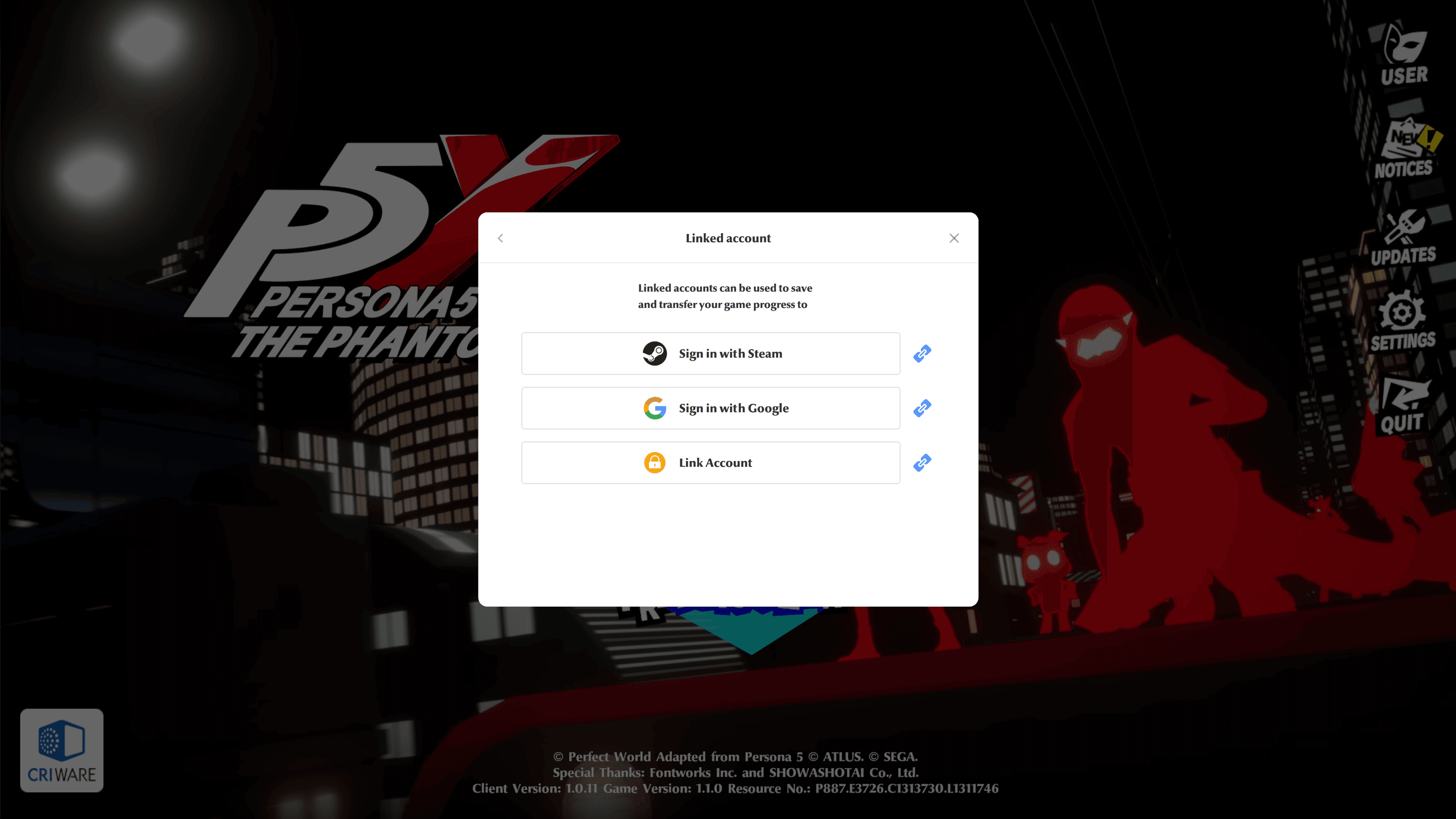
Building auth into your game from the get-go also offers more options when it comes to global audiences. In many regions outside the United States, WhatsApp is wildly popular compared to standard text messaging. Geo-aware auth solutions can automatically offer these alternative options to players based on their location. Similarly, many players will want to link their Twitch and Discord accounts (gotta get those limited-time drops!), but when you’re locked into a single platform’s auth system, you’re locked out of these options.
Studios of all sizes rarely staff dedicated support teams to handle authentication meltdowns—which are bound to happen during new platform launches without independent auth in place. Remember my experience trying to play a game that had just joined the Steam marketplace? Leaving cross-platform auth until the eleventh hour can deeply and directly impact engagement and revenue.
Adaptive security, MFA incentives, and better player experience
You don’t have to look far to see gamers in full-on revolt over authentication misfires. Take the subreddit /r/GenshinHacked: it’s large enough to be in the top 5% of all Reddit communities, and it exists solely for disenfranchised Genshin Impact players to voice their frustrations over account security issues. Most of the posts revolve around begging for support to restore their purchases or access to high-value accounts that have been taken over by fraudsters, or subsequently banned due to suspicious activity.
The TL;DR is that community backlash over auth-gone-wrong isn’t quiet frustration anymore. It’s compounded, broadcasted, and echo-chambered until sentiment for a game can take a nosedive. Genshin Impact can shrug off occasional bad press, but it’s also one of the most popular games in human history.
The answer isn’t simply “crank up security” wholesale, though. If you make your auth mechanics too aggressive, you’ll drive players away. Nobody wants to enter a verification code every time they log in, or jump through hoops just to tick off their dailies.
The solution is adaptive authentication that knows when to step in and when to stay behind the scenes. Adaptive multi-factor authentication (MFA) looks at contextual signals like IP reputation, geolocation, and “impossible traveler” scenarios (e.g., logging in from two different locations thousands of miles apart in quick succession), then assigns a risk score. If the score says it’s suspicious, extra authentication steps show up. If not, it’s smooth sailing. This equals both better security and less friction when players repeat their usual patterns.
Below is an example of how static MFA works for players...
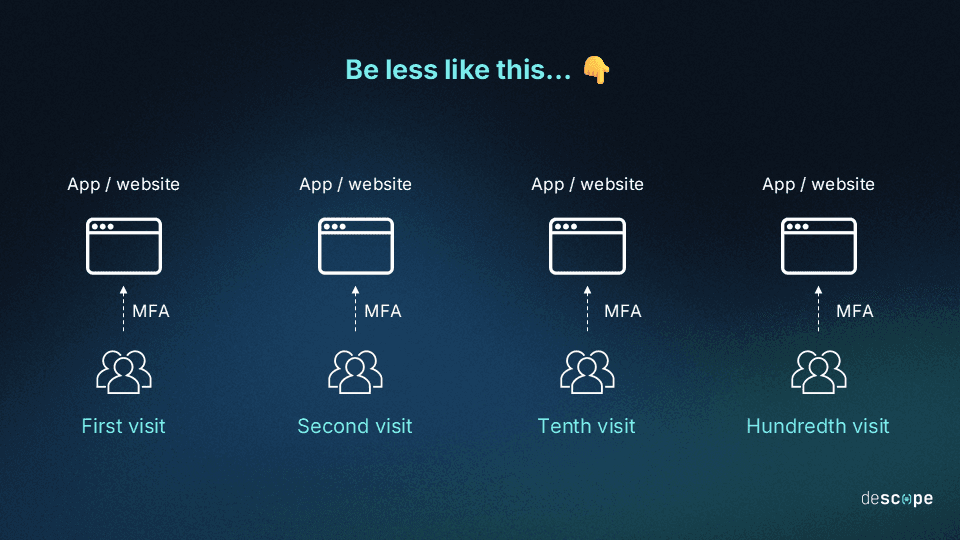
… versus how adaptive MFA can work for your game:
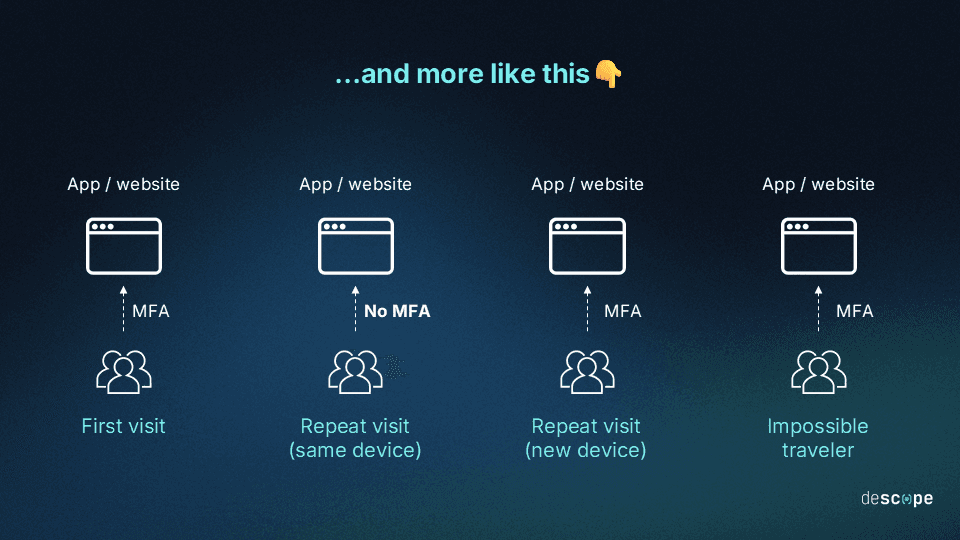
Encouraging MFA adoption can be a challenge, though, which is where in-game incentives play a role in engaging players with their own security. For example, Riot Games recently began incentivizing MFA with a bundle for three of their most popular titles: a League of Legends emote, a VALORANT Gun Buddy, and 100 Teamfight Tactics Treasure Tokens.
It’s a clever push with a little marketing cross-pollination tied in, though a single emote probably won’t nudge VALORANT-only players into trying League (or vice versa). However, this example shows the sheer range of options games can leverage when it comes to pointing players in a safer direction. As Riot explained in their announcement for the campaign, “While these rewards are intended to sweeten the pot, there’s no reason not to have MFA enabled.”
Ultimately, the key is making security feel like protection players want, not a punishment for simply logging in.
Unified authentication across every player touchpoint
Your players don’t think about games like devs do. They think in terms of progress and value. They might start playing your mutli-platform game on their phone during a lunch break, continue on their PC after work, and maybe check the companion app or site before bed. Each of these transitions is a chance to delight, but they’re also vulnerable chokepoints where players might drop off.
Imagine a player buying a pricey skin on mobile, then logging in to their PC account only to find it missing. They’re not thinking, “Oh, different authentication systems for different apps.” They’re thinking, “This game stole my money.” Cue the angry and accusation-filled reviews, the refund requests, the support tickets that could have been prevented with unified authentication.
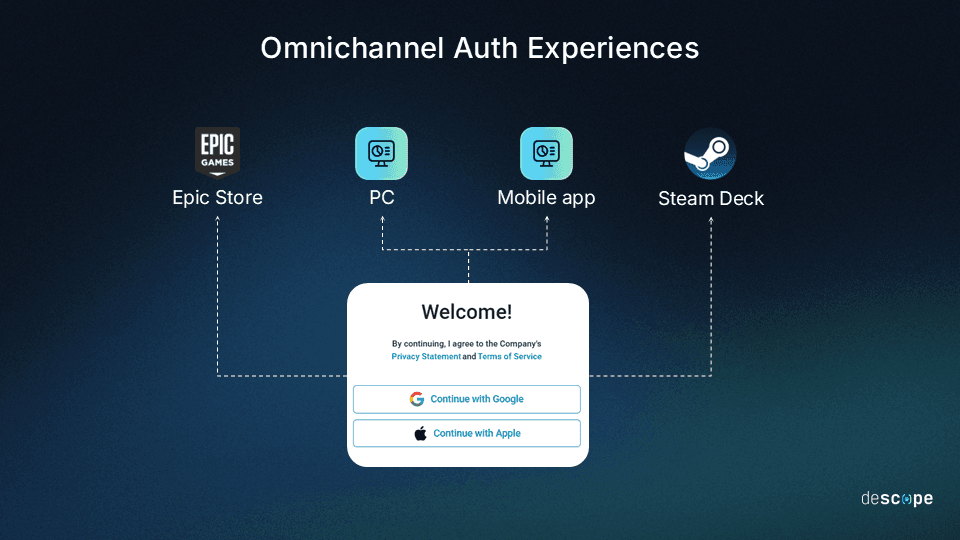
Consistency becomes even more paramount for payments. Depending on the platform, different payment authentication options may be out of your control. Case in point: I’ve disabled the default step-up MFA that the Google Play Store requires for purchases, but some savvy games will still ask for extra auth if they notice I’m logging in from a new location. However, Steam has its own rules, and so does every gaming console. Point being, without a unified approach to payment security, you’re creating an inconsistent (and potentially risky) environment for players to make in-game purchases.
Smart studios treat authentication as a single system with multiple entry points. Whether players are grinding out progress, buying new character outfits, or simply doing dailies, every interaction should feel like part of the same cohesive experience. Because when you’re inconsistent with how you handle player auth, it will cost you more than a couple one-star reviews.
Making auth invisible with Descope
Authentication should be like the invisible walls that keep players from falling off the game map. You only notice them when it’s absolutely necessary. In other words, the best auth systems let players focus on what matters: your game.
We talked about how modern authentication can turn that first login from a barrier into a competitive advantage. We covered why platform-independent auth from day one eliminates tech debt. We explored how removing friction with passwordless methods and adaptive MFA leads to better experiences.
And most importantly, we discussed how unifying identity across platforms isn’t a luxury but a fundamental player expectation.
At Descope, we’ve designed our drag & drop authentication solution specifically to address these challenges. Whether you’re launching your indie game on Steam today or planning a cross-platform release in two years, Descope Flows let you implement passwordless authentication, social login with Discord and Twitch, adaptive MFA, and more—all without writing a single line of code.
Sign up for a Free Forever Descope account and start building auth that players will never have to think about. Check out our comprehensive docs where we showcase diverse client SDKs and our RESTful API, and drop by our dev community AuthTown to share best practices with like-minded builders.
Because, at the end of the day, players will only remember two things: games that were fun, and games that made them mad enough to leave an angry review. Make sure yours is remembered for the right reasons.






